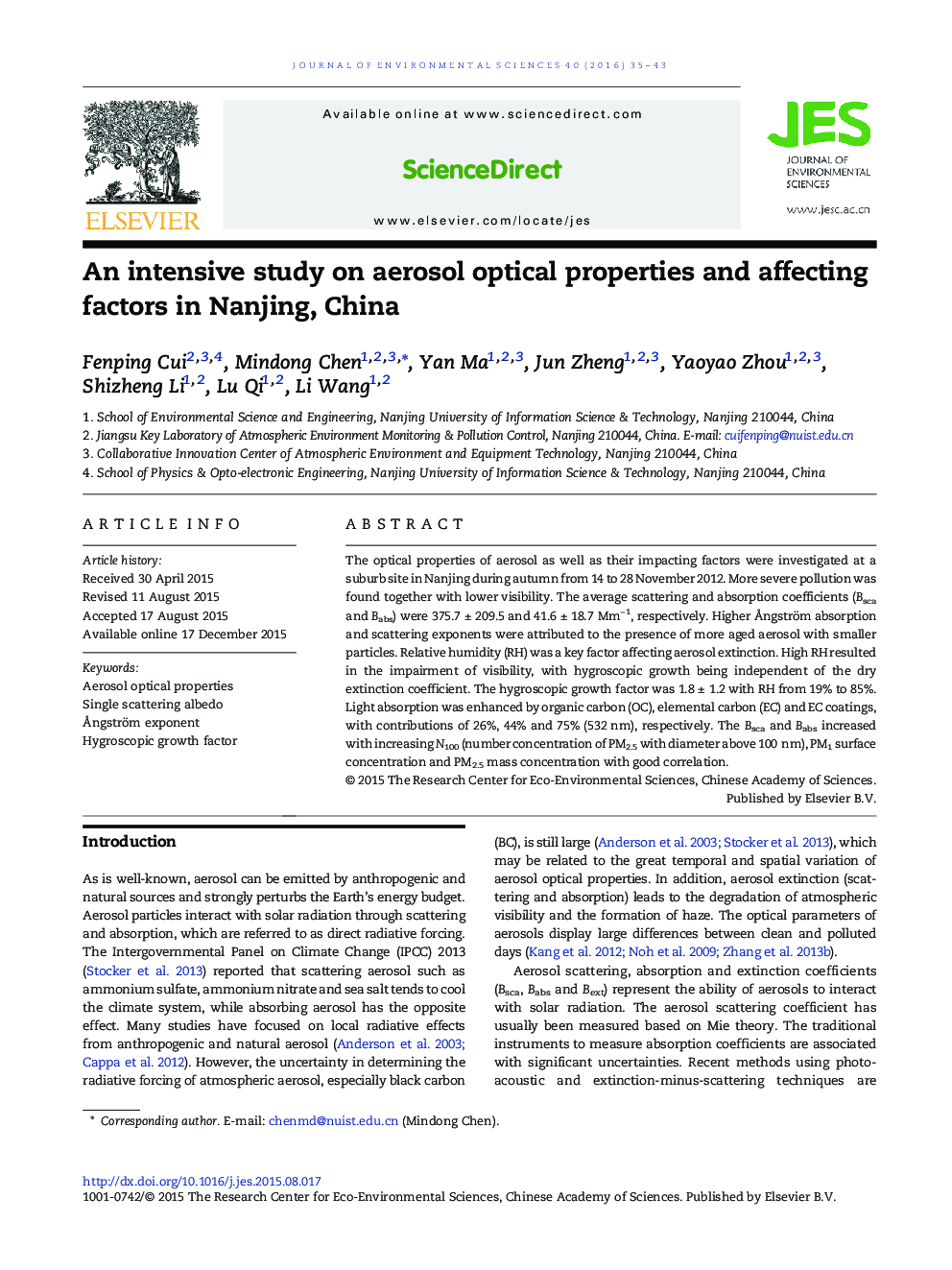| Article ID | Journal | Published Year | Pages | File Type |
|---|---|---|---|---|
| 4453824 | Journal of Environmental Sciences | 2016 | 9 Pages |
The optical properties of aerosol as well as their impacting factors were investigated at a suburb site in Nanjing during autumn from 14 to 28 November 2012. More severe pollution was found together with lower visibility. The average scattering and absorption coefficients (Bsca and Babs) were 375.7 ± 209.5 and 41.6 ± 18.7 Mm− 1, respectively. Higher Ångström absorption and scattering exponents were attributed to the presence of more aged aerosol with smaller particles. Relative humidity (RH) was a key factor affecting aerosol extinction. High RH resulted in the impairment of visibility, with hygroscopic growth being independent of the dry extinction coefficient. The hygroscopic growth factor was 1.8 ± 1.2 with RH from 19% to 85%. Light absorption was enhanced by organic carbon (OC), elemental carbon (EC) and EC coatings, with contributions of 26%, 44% and 75% (532 nm), respectively. The Bsca and Babs increased with increasing N100 (number concentration of PM2.5 with diameter above 100 nm), PM1 surface concentration and PM2.5 mass concentration with good correlation.
Graphical abstractFigure optionsDownload full-size imageDownload as PowerPoint slide
